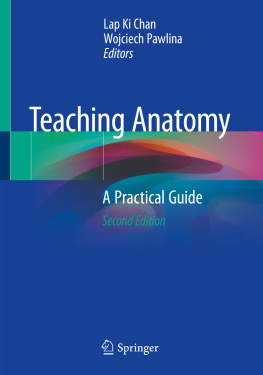
The Jossey-Bass Higher and Adult Education Series
Cover Design: Wiley
Cover Art: Vasya Kobelev | Shutterstock
Copyright 2015 by John Wiley & Sons, Inc. All rights reserved.
Published by Jossey-Bass
A Wiley Brand
One Montgomery Street, Suite 1200, San Francisco, CA 94104-4594 www.josseybass.com
No part of this publication may be reproduced, stored in a retrieval system, or transmitted in any form or by any means, electronic, mechanical, photocopying, recording, scanning, or otherwise, except as permitted under Section 107 or 108 of the 1976 United States Copyright Act, without either the prior written permission of the publisher, or authorization through payment of the appropriate per-copy fee to the Copyright Clearance Center, Inc., 222 Rosewood Drive, Danvers, MA 01923, 978-750-8400, fax 978-646-8600, or on the Web at www.copyright.com. Requests to the publisher for permission should be addressed to the Permissions Department, John Wiley & Sons, Inc., 111 River Street, Hoboken, NJ 07030, 201-748-6011, fax 201-748-6008, or online at www.wiley.com/go/permissions.
Limit of Liability/Disclaimer of Warranty: While the publisher and author have used their best efforts in preparing this book, they make no representations or warranties with respect to the accuracy or completeness of the contents of this book and specifically disclaim any implied warranties of merchantability or fitness for a particular purpose. No warranty may be created or extended by sales representatives or written sales materials. The advice and strategies contained herein may not be suitable for your situation. You should consult with a professional where appropriate. Neither the publisher nor author shall be liable for any loss of profit or any other commercial damages, including but not limited to special, incidental, consequential, or other damages. Readers should be aware that Internet Web sites offered as citations and/or sources for further information may have changed or disappeared between the time this was written and when it is read.
Jossey-Bass books and products are available through most bookstores. To contact Jossey-Bass directly call our Customer Care Department within the U.S. at 800-956-7739, outside the U.S. at 317-572-3986, or fax 317-572-4002.
Wiley publishes in a variety of print and electronic formats and by print-on-demand. Some material included with standard print versions of this book may not be included in e-books or in print-on-demand. If this book refers to media such as a CD or DVD that is not included in the version you purchased, you may download this material at http://booksupport.wiley.com. For more information about Wiley products, visit www.wiley.com.
Library of Congress Cataloging-in-Publication Data has been applied for and is on file with the Library of Congress.
ISBN 978-1-118-90341-4 (hbk)
ISBN 978-1-118-90359-9 (ebk)
ISBN 978-1-118-90377-3 (ebk)
Preface
Most of us, at some time in our lives, teach adults. It may be in a classroom or training setting. But most likely, it is in an informal way: teaching a friend or relative a craft or skill that we can pass on, in the workplace when we help a colleague learn a new computer application, during a religious education class at the local church or synagogue, teaching first aid techniques to a group of adult volunteers, or organizing a protest around a controversial issue facing the community. The point is that most people who teach adults do not primarily identify themselves as adult educators. For many educators, such as college instructors, adults usually represent a percentage of all learners. However, adult learning can be found in almost any setting in our society; and where adults are learning, there is someone who is teaching these adults or helping to facilitate their learning.
The purpose of this book is to introduce you to the world of teaching adults. For me, the book presents both a challenge and an opportunity. I have spent my professional life writing mainly for the academic worldthose people who identify with the profession and practice of adult education. In this book, my goal is to reach out beyond the academy to share ideas with you in a way that can be read quickly and used as a resource that you can revisit from time to time as you face new challenges and questions in teaching adults. For me the goals are to keep jargon to a minimum and to be sure that the book is grounded in ideas developed from theory, research, and practice in adult education, while presenting these ideas without the extensive use of footnotes and references. I have included a brief list of books for further reading at the end of each chapter for those of you seeking more in-depth discussion. By writing this book, it was my hope to be able to share ideas I believe are worth sharing with readers like you who may be new to teaching adults or who are seeking new ways to reach the adult learners with whom you are already working.
The book is comprised of twelve chapters and an epilogue divided into three parts. Part One, which includes the first two chapters, begins with Chapter One, which sets the stage for understanding the exciting world of teaching adults. In Chapter Two, I describe seven qualities or attributes of effective teachers and introduce what I envision as four keys to effective teaching. The six chapters of Part Two focus on each of the four keys described above: knowing the content, knowing the adult learner, knowing about teaching, and knowing yourself. In Part Three, four chapters address topics of particular interest in working effectively with adult learners. These include understanding the learning environment, overcoming resistance to learning, motivation, and dealing with special situations that can arise when teaching adults. Finally, a brief Epilogue brings the discussion to a close by summarizing main themes and offering a call to action as you begin to develop your own identity as a teacher of adults.
I wrote this book with four kinds of readers in mind. First, the book is intended for people who are totally new to teaching but who find themselves responsible for some form of teaching. Included here are professionals who are suddenly told they have to offer a training session on an area of their practice; the non-teacher who agrees to teach an adult Sunday School class; people who train volunteer leaders in 4-H, scouting, Junior Achievement, or some other youth group; or the historian who is called upon to teach a group of adults about how to do genealogy on the Internet. These are people who have special skills but have not previously had an opportunity to help others learn about what they know.
A second audience is made up of people who have responsibility for teaching adults but who don't think of themselves primarily as teachers. These include ministers, social workers, health care providers, and other professionals who identify with a specific profession but who don't think of themselves as teachers, even though they know that much of what they do is teaching.
A third audience to whom I have targeted this book is made up of professors or instructors in colleges, universities, community colleges, and preparatory schools. While this group of educators has had a lot of experience with teaching, they often are not prepared to face the challenge of meeting the unique needs of the increasing number of adult and part-time students who enter their classes.
Finally, I would be remiss if I did not include as one of the audiences for this book those graduate students in adult education or related fields who are interested in learning about teaching adults. While you need to think of this book as an introduction or overview, I believe it can be a primer that will help you identify areas that you might like to pursue in greater depth during your graduate studies.
Next page

